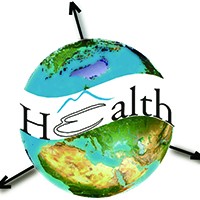Use of geographic information system as a tool for schistosomiasis surveillance in an endemic Municipality in Eastern Samar, The Philippines

Accepted: 3 March 2021
HTML: 329
All claims expressed in this article are solely those of the authors and do not necessarily represent those of their affiliated organizations, or those of the publisher, the editors and the reviewers. Any product that may be evaluated in this article or claim that may be made by its manufacturer is not guaranteed or endorsed by the publisher.
Authors
This study aimed to demonstrate the use of geographic information systems (GIS) in identifying factors contributing to schistosomiasis endemicity and identifying high-risk areas in a schistosomiasis- endemic municipality in the Philippines, which was devastated by Typhoon Haiyan in 2013. Data on schistosomiasis determinants, obtained through literature review, the Philippine Department of Health, and concerned local government units, were standardized and incorporated into a GIS map using ArcGIS. Data gathered included modifiable [agriculture, poverty, sanitation, presence of intermediate and reservoir hosts, disease prevalence and mass drug administration (MDA) coverage] and nonmodifiable (geography and climate) determinants for schistosomiasis. Results showed that most barangays (villages) are characterized by favourable conditions for schistosomiasis transmission which include being located in flood-prone areas, presence of vegetation, low sanitary toilet coverage, presence of snail intermediate host, high carabao (water buffalo) population density, previously reported ‰¥1% prevalence using Kato-Katz technique, and low MDA coverage. Similarly, barangays not known to be endemic for schistosomiasis but also characterized by the same favourable conditions for schistosomiasis as listed above and may therefore be considered as potentially endemic, even if not being high-risk areas. This study demonstrated the importance of GIS technology in characterizing schistosomiasis transmission. Maps generated through application of GIS technology are useful in guiding program policy and planning at the local level for an effective and sustainable schistosomiasis control and prevention.
How to Cite
PAGEPress has chosen to apply the Creative Commons Attribution NonCommercial 4.0 International License (CC BY-NC 4.0) to all manuscripts to be published.

 https://doi.org/10.4081/gh.2021.957
https://doi.org/10.4081/gh.2021.957




